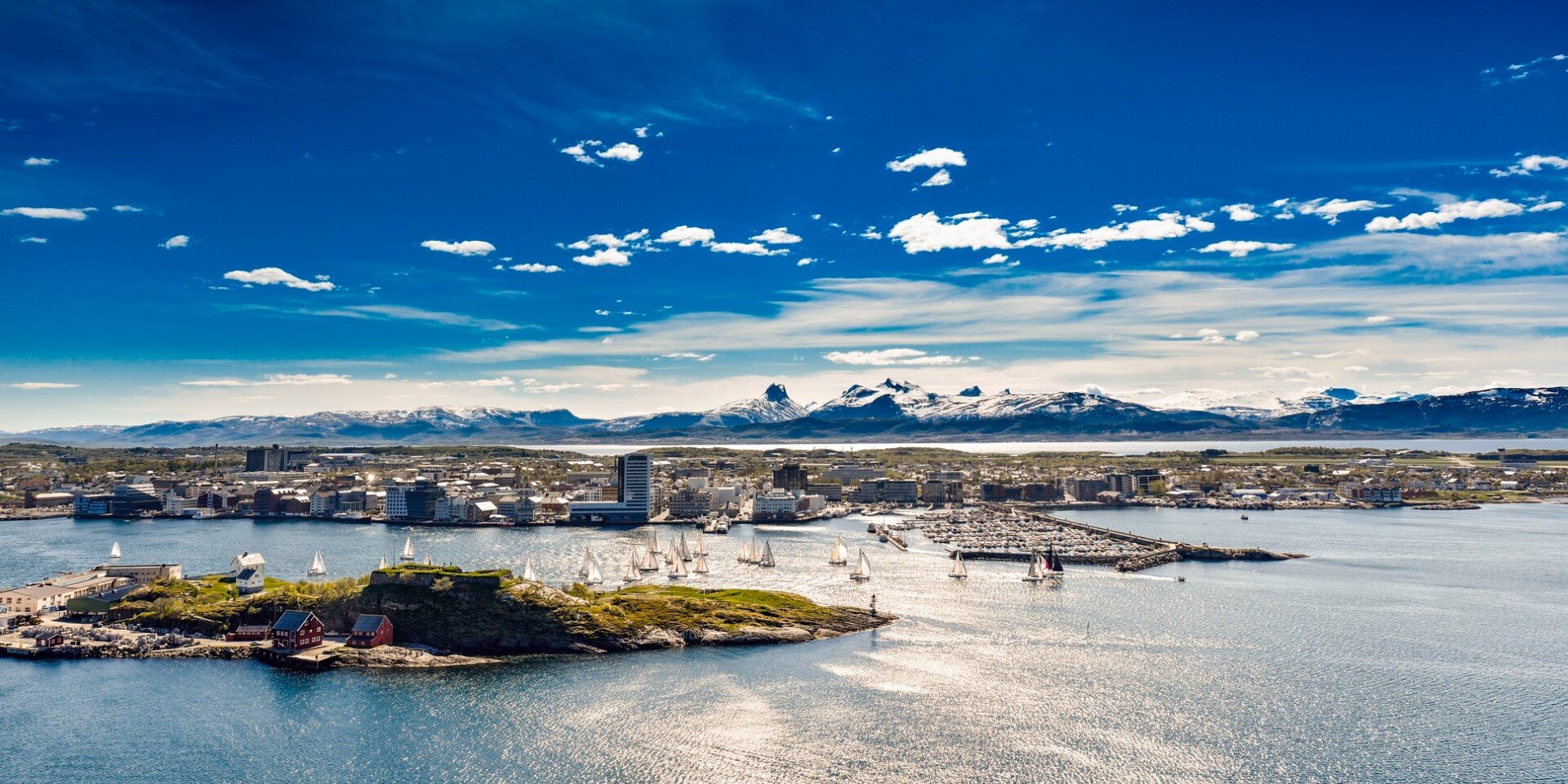Previous port: Ørnes
Dramatic peaks to the east and a wonderful archipelago to the west provide Ørnes with a unique natural setting.

Bodø is home of the world’s strongest maelstrom, sea eagles, the midnight sun and the northern lights.
Surrounded by sea and fjord, the light in Bodø constantly shifts with the wind and weather. And then there’s the exotic fact that both the midnight sun and northern lights can be seen from here. Bodø is the capital of Nordland county and lies just north of the Arctic Circle where the midnight sun is visible from 2 June to 10 July. Due to atmospheric refraction, there is no true polar night in Bodø, but because of the mountains south of Bodø, the sun is not visible from the city from early December to early January. Monthly average number of sun hours in Bodø peaks in June with 221 hours.
Another unique feature is the closeness to the countryside and the sea. Combine an urban espresso with salty sea rafting and mountain walking. Choose between concerts and exhibitions and then jump right into your kayak or onto your off-road bike. The city is well known for its hospitality and hosts one of Norway’s most lively student communities.
The strongest tidal current in the world, Saltstraumen, with water speeds reaching 22 knots, is situated just southeast of Bodø. Kjerringøy is a well-preserved old trading village on the coast just north of Bodø. With its scenic setting and authentic buildings, several movies have been shot at this little port.
Port Address
Terminalveien, 8006 Bodø
View on map
The earliest settlers came to the area almost 10,000 years ago, at the end of the last ice age, attracted by the unusually abundant stocks of fish and seabirds of the Saltenfjord. The burial mounds found at Saltstraumen highlight the importance of travel through the strait during the Iron Age. As a town, Bodø is not very old. Established in 1816, it had only 200 inhabitants for its first 20-30 years. The arrival of herring off the coast in 1860, and its presence for the next 20 years caused the town to grow rapidly and extensive industry developed. By the time the herring stocks were exhausted, the town had established itself and had developed more independent industries. Hurtigruten and freight traffic became of great importance to the town. It was not until just before World War II that Bodø became accessible by road from the south, although the road over Saltfjellet remained closed during the winter until as recently as the 1980s. An air service was introduced after World War II, making the town a major communications centre. During the invasion in 1940, German planes destroyed 2/3 of the town’s buildings and 3,700 people lost their homes. The town was rebuilt and its magnificent and distinctive cathedral was completed in 1956.